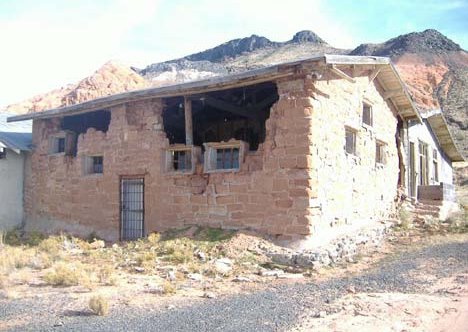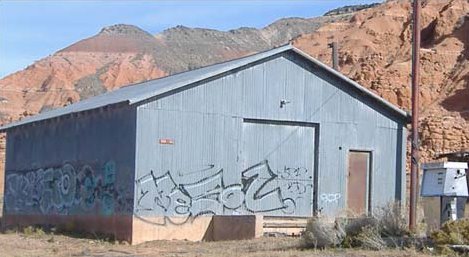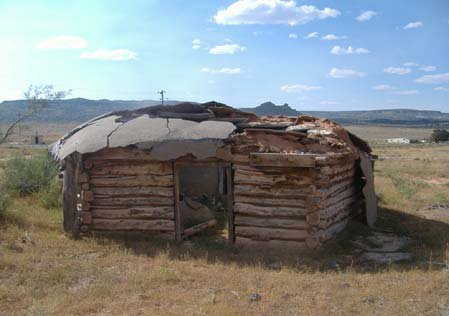
The Bitahochee was first established in 1870 and functioned as a stage coach station. Due to the tenuous relationship between the white man and the Indians at the time, small openings were built into the walls as gun ports. Ten years later it became a full-fledged trading post, and because it was located at the edge of the southern border of the reservation, it became known as the Gateway to the Navajo Nation.
The Bitahochee became the place for the Navajo to gather to trade their wool, woven rugs, and other items for goods they could never acquire otherwise. The wares on the shelves of the Bitahochee were both mystical and mesmerizing to the Navajo; many Navajo children tasted their first hard candy here, traded for or occasionally given as a treat by the proprietor. The white traders were more than happy to deal with the Navajo. The quality of the wool, native crafts, blankets, pottery, and paintings made any trade a good one.
The Navajo would sometimes spend several days at the post bartering their wool or craft items, and socializing with other members of the tribe. Because of the vastness of the reservation, and the arduous mode of transportation (by horseback or on foot), members of the tribe did not cross paths that often.
The Bitahochee served as an enlistment post during World War II. The famous Navajo Code Talkers were sworn in here, later departing by bus to destinations and history making, although the world wouldn't realize it for some time to come. The grave of a U.S. Calvary soldier who served at the post in the 1870’s also rests on the grounds behind the main buildings.
Although the management of the Bitahochee Trading Post changed hands many times, it remained a valuable connection for the Navajo Nation to the outside world. Over time convenience stores, and the ability of people to travel to nearby towns to shop, made the Bitahochee obsolete. The tribe took the Bitahochee over and closed it for good in 1994. It appeared that the post was destined to become a pile of crumbled stone and windblown memories. Fortunately, a mistake at tribal headquarters set the stage for saving The Bitahochee.
The Bitahochee was mistakenly flagged as a site were the Hanta virus was located. A crew arrived with bulldozers prepared to destroy the trading post. Standing in their way was one Navajo man named Redwing Ted Nez. Redwing parked his van at the entrance of the post, and refused to move. He knew the trading post was not a site of the Hanta virus. He had also grown up on the steps of the Bitahochee. It had introduced him to many things in life, and he knew how important it had been to his people. Redwing stood his ground. A few telephone calls later, the mistake was discovered, and the bulldozers were sent away.
Redwing never realized that stopping a few bulldozers would be child’s play compared to the daunting task of working his way through the red tape and bureaucracy. It has taken Redwing almost ten years to acquire the permits and lease on the Bitahochee so he could restore it. Now he is taking the next step, the real deal, gathering the support to help restore the Bitahochee Trading Post.



